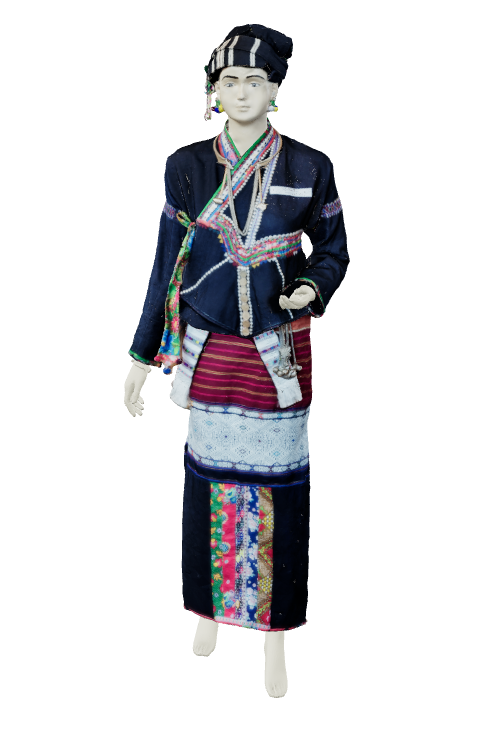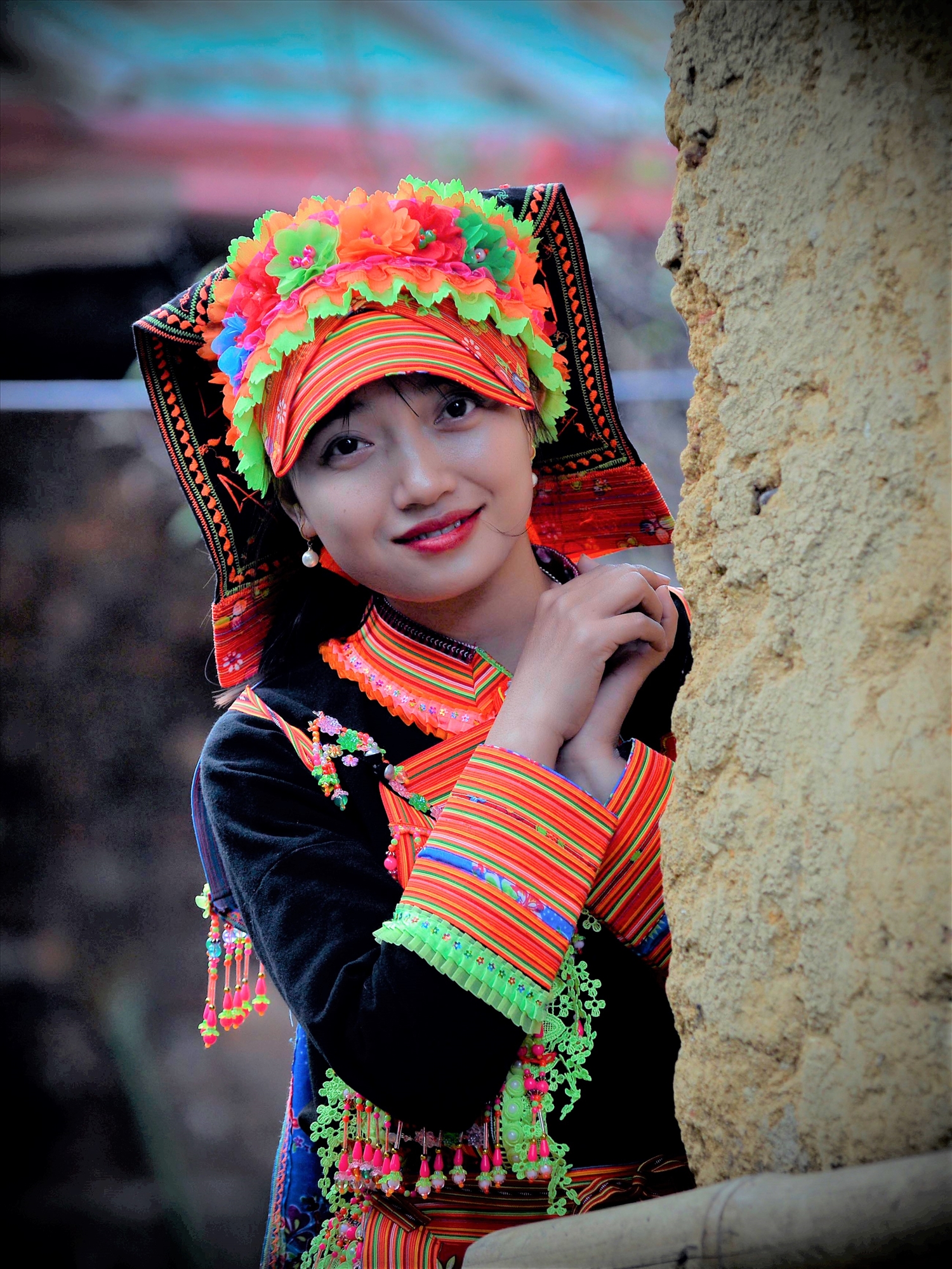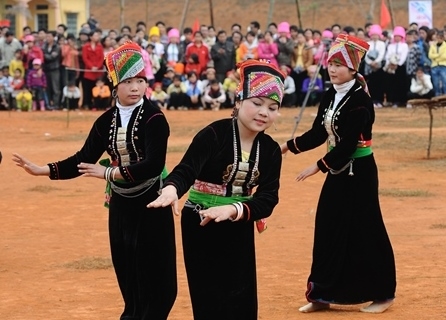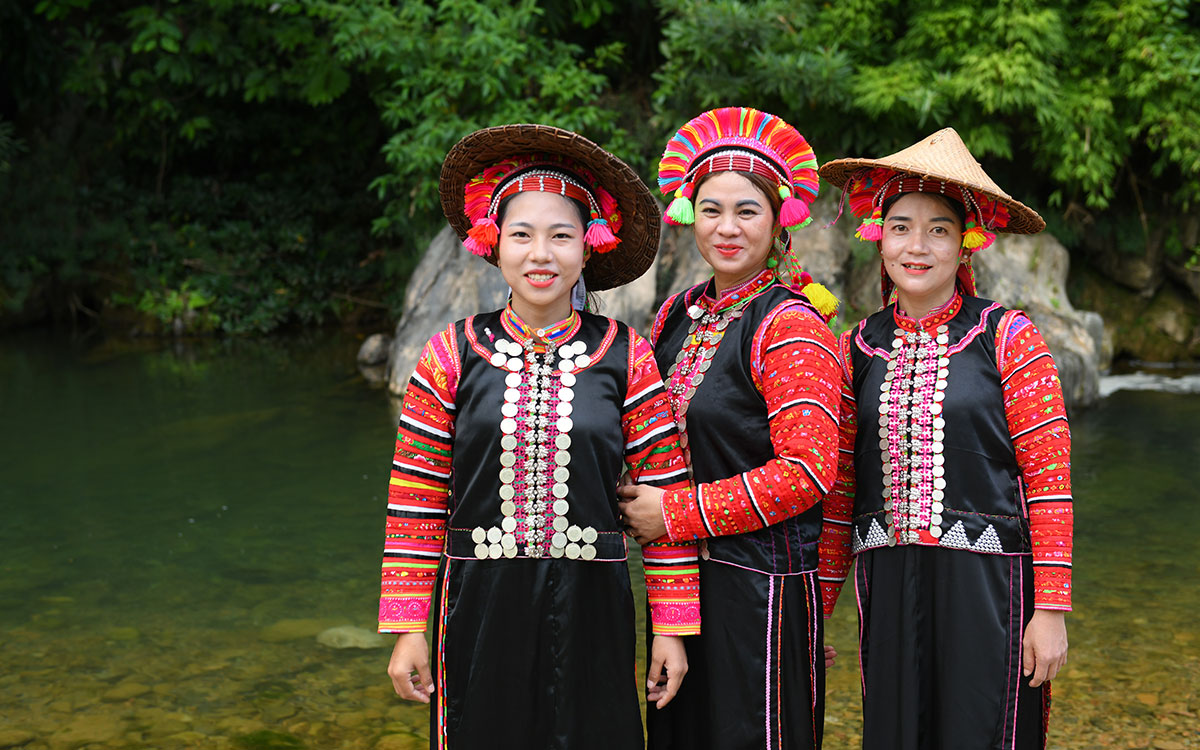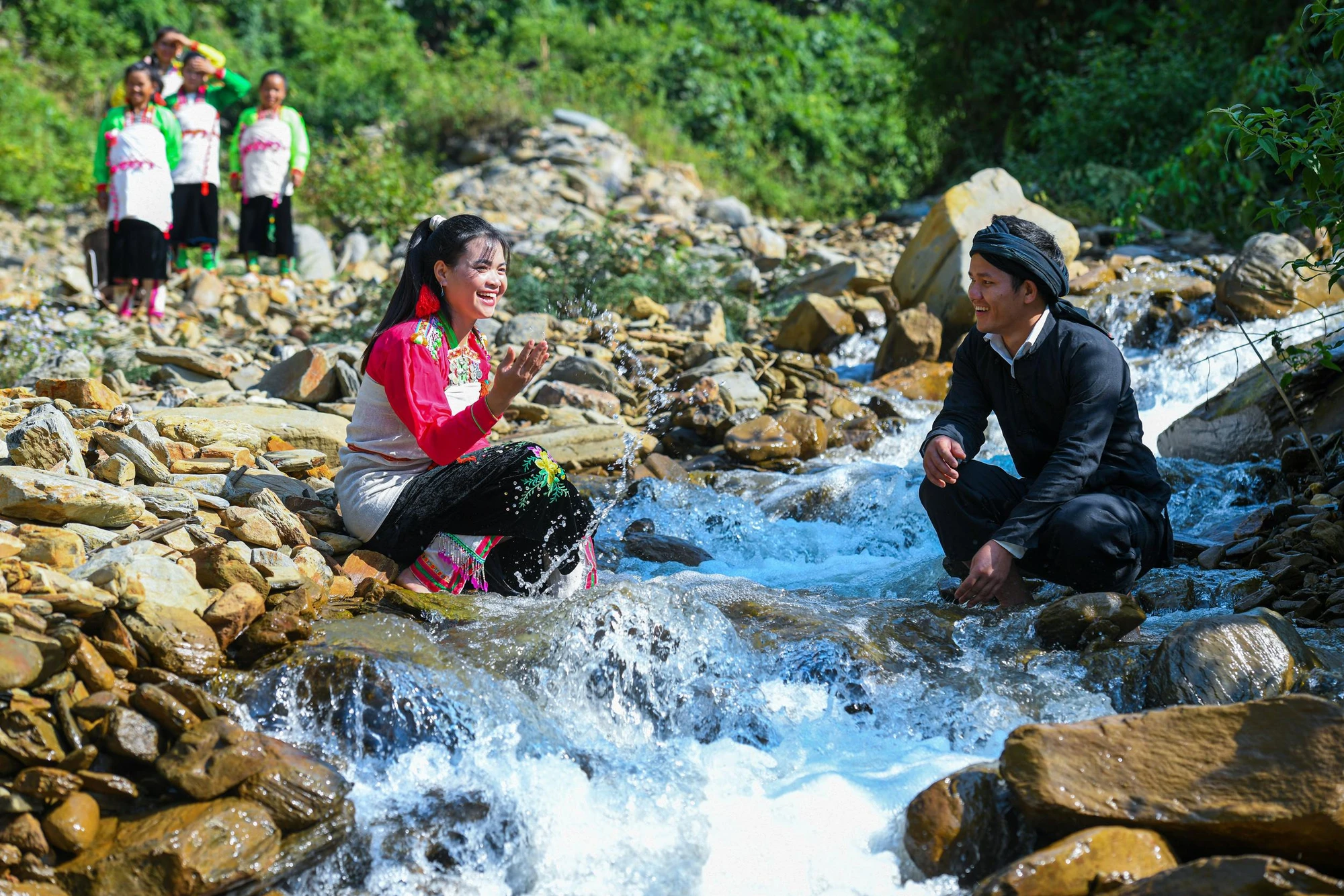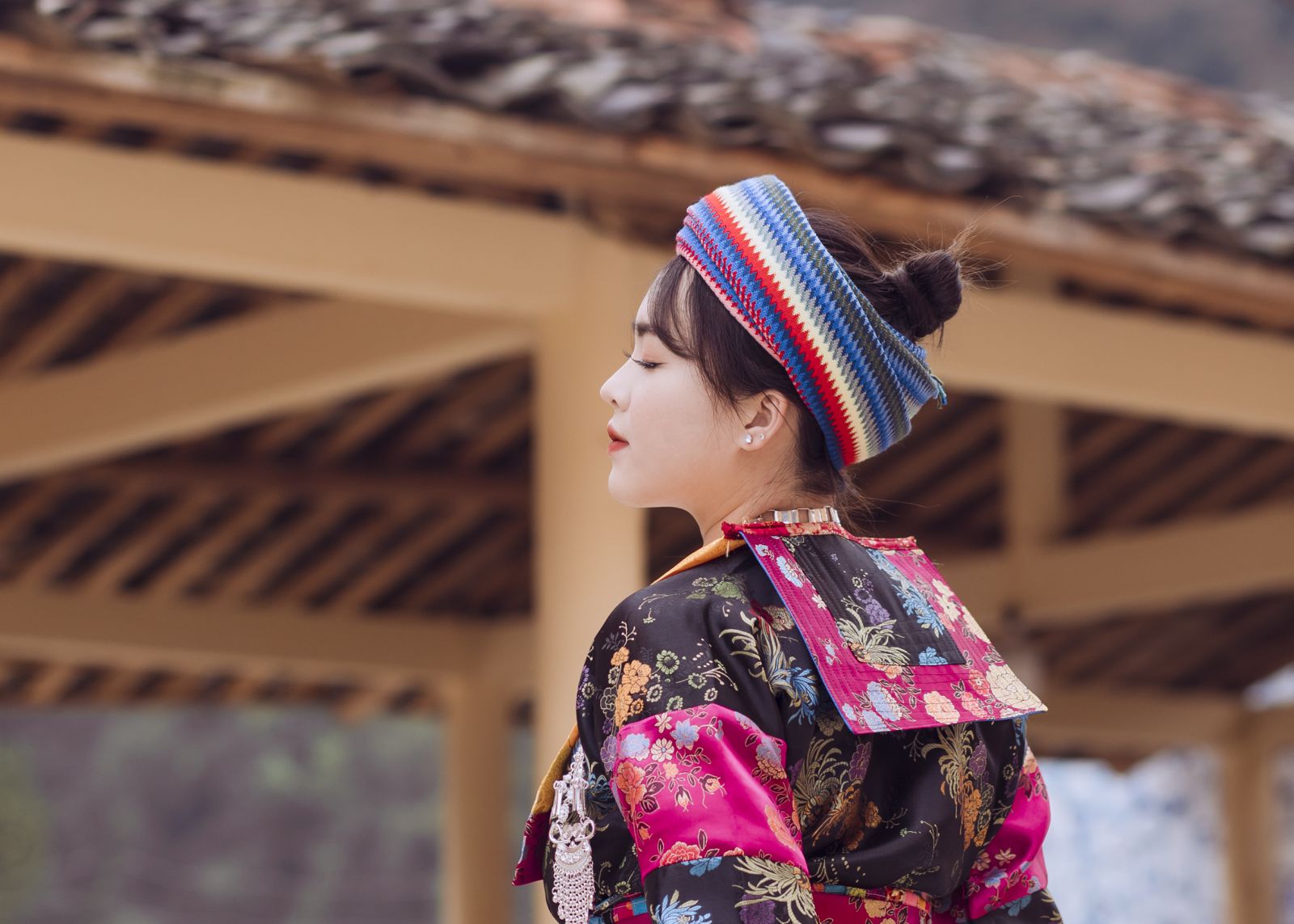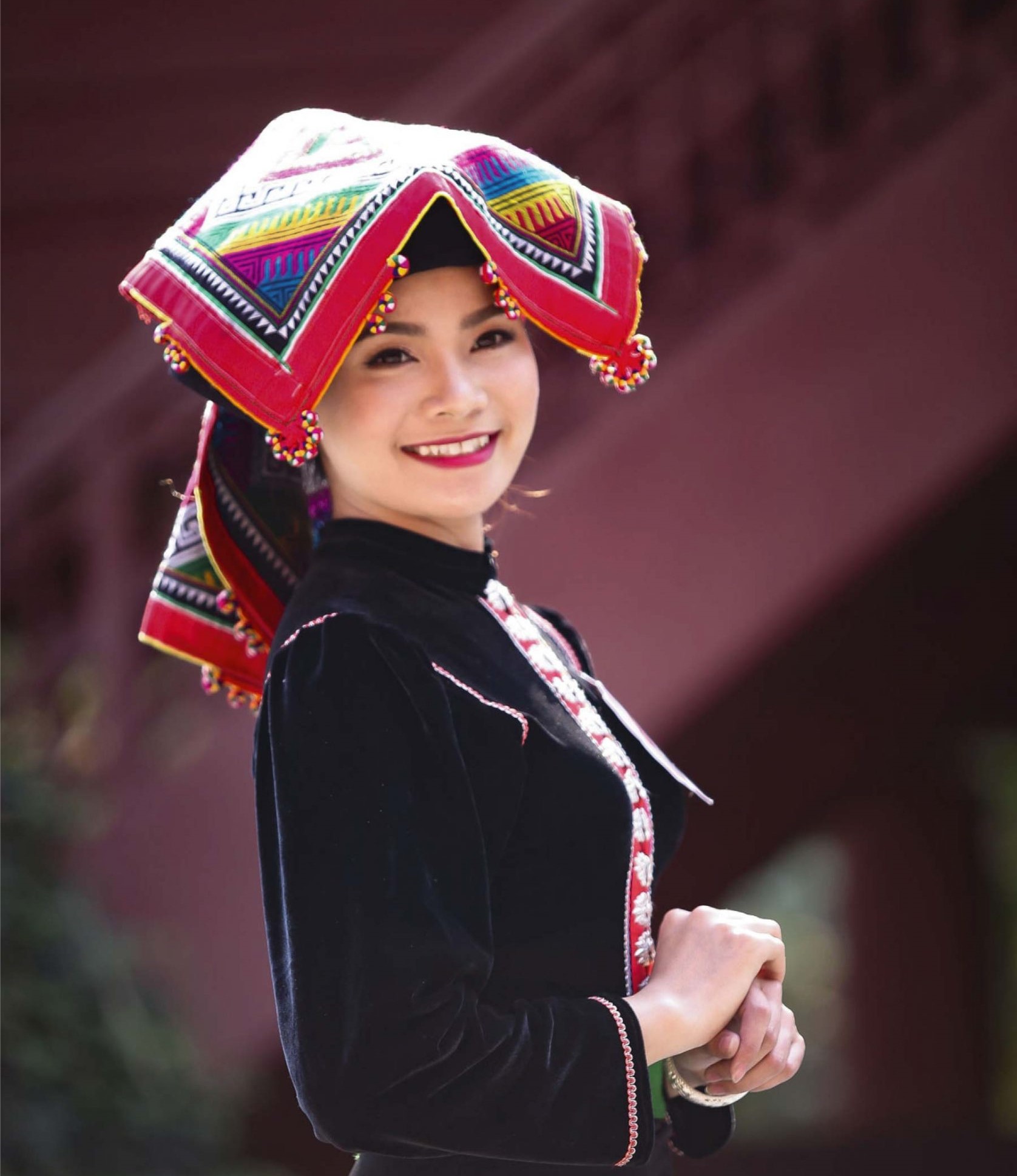LỰ ETHNIC GROUP
INTRODUCE
- General overview
According to the List of Vietnamese ethnic groups issued by the General Statistics Office in 1979, Lự ethnic group in Vietnam is also referred to as Lừ, Nhuồn (Duồn), Phù Lừ. They belong to the Tày - Thái language group (Tày, Thái, Nùng, Sán Chay, Giáy, Lào, Bố Y và Lự). Lừ or Thay Lừ is the name used by the community, primarily residing in the province of Lai Châu.
According to various historical sources and oral traditions, the Lự people have originated from Xíp Xoong Păn Na in Yunnan, China, migrating to Vietnam around the 12th century AD. They were among the earliest settlers in the Mường Thanh valley (present-day Điện Biên province). Throughout their survival and development, they left many imprints and evidence, such as the Tam Vạn citadel (Xam Mứn) and the Nà Lự rice fields in this region. Around the early 13th century, the leader Lạng Chượng led his forces from Mường Lò to conquer Mường Thanh. The Lự people were pushed into a dependent position and continued to migrate south, across to neighboring Laos.
According to some recorded documents from the Lự people, they arrived relatively late in Phong Thổ and Sìn Hồ in Lai Châu province, approximately six to seven generations ago (18th century), settling in the Pặu and Phiêng Chá villages.
The Lự ethnic group has its own distinctive language, creating a unique cultural identity. In their internal communication, they use their traditional language and use Vietnamese to communicate with other communities. Moreover, they learn and use the Thái, Lào and Mông languages.
In the past, the Lự people had ancient writing, but nowadays, almost no one knows how to read and write it, so it cannot be passed down to future generations.
Currently, the Lự ethnic group in Lai Châu has 1,378 households with a population of 6,733 individuals, accounting for 1.49% of the total population of Lai Châu province. They are mainly concentrated in two districts: Tam Đường and Sìn Hồ, interspersed with the Thai and Khơ Mú ethnic groups in Than Uyên district.
The majority resides in Sìn Hồ district with 764 households and 3,768 people, while in Tam Đường district, there are 614 households with 2,965 people. In Tam Đường, the Lự people primarily live in Bản Hon commune, where traditional cultural values of the Lự people are still preserved in their original form.
- Village space
Lự people’s village has many similarities with Lào and Thái ethnic groups. These villages are often situated on flat terrain, close to water sources, or along small streams, with each village consisting of 20-50 households. The land of the village is demarcated by an expanse of fields, forests for timber exploitation, and streams flowing through. The beginning of the village is believed to be the place where ghosts reside - usually an old tree (banyan or rice tree).
Before the liberation in 1954, the Lự people's villages were under the administration of the “mường” organization of the Thái people. Every year, the Lự villages had to undergo forced labor and contribute to the Thái landlords in the name of "việc mường". They were not allowed to participate in “mường” official positions but were only permitted to maintain some aspects of self-governance according to their customs and ethnic traditions.
- Living space
The Lự people live in stilt houses (hươn), which have two thatched roofs, many of which hang down. In the past, the houses had two staircases (one for men and one for women), but nowadays, there is only one staircase facing east (towards the sunrise). Some houses initially had two staircases, but one was later sealed off and removed. The houses have a parent’s bedroom (an area for ancestral worship) and children’s bedroom. The rooms are divided by fabric, like Thai people. The Lự people are most taboo about strangers going to these sleeping areas. The houses have two kitchens (one for cooking and one for boiling water). Typically, the number of columns in Lự people's houses includes five rows of horizontal columns and three rows of vertical columns.
Unlike the Thái and Lào people, the Lự people's houses have two roofs with steeper slopes and are smaller in size. The houses typically have a rectangular or nearly rectangular shape, ranging from 12-15m in length and 5-6m in width or more, with five rows of horizontal columns and three or four rows of vertical columns. Depending on the number of main spaces in the house, the number of columns may go up to 16 columns (for a three-space house) or 20 columns (for a four-space house).
The structure of the Lự stilt house depends entirely on the system of columns and the way they are assembled. The house columns are interconnected to form the frame using crossbeams. The columns are placed on stone slabs, serving both to level the ground and to enhance the durability of the column bases. In the past, these house columns were typically rounded, but nowadays, some houses have replaced them with square-edged wooden columns. The house is enclosed with wooden boards, each with a thickness of 2cm and a width ranging from 20-35cm, tightly fitted together.
- Cultivation production activities
The agricultural model of the Lự people is similar to that of the Thái people, which is valley agriculture with a field-farm structure. The Lự people in Lai Châu live in the highlands (from 500 to 600m) above sea level. They spend a lot of effort and time exploring the foothills and bringing water from the source of the water source to the rice field. In general, wherever there are hills and convenient water sources, the Lự people reclaim them into terraced fields, sometimes located 2-5km away from their homes. The process of cultivating rice mainly pays attention and requires substantial investment of effort and time. Due to the complex terrain, ditches are dug around the hillsides, sometimes having to carry water through three to four hills to reach the fields.
The Lu people rarely use buffalo and cow manure in production, especially in rice growing. Only in cases of extremely poor fields might some families apply manure a week after planting. Nowadays, many families use chemical fertilizers like nitrogen, phosphorus, and potassium during the nurturing process.
The Lự people grow both regular rice and sticky rice (local rice varieties). Although these rice varieties may not yield as much, they produce fragrant, sticky, and tasty rice. Currently, most of the area grows new rices such as Tạp giao, IR64... with higher productivity, with output reaching 2-4 tons/ha, sufficient to meet their food needs.
The Lự people do not distinguish between men's and women's jobs. Typically, men undertake physically demanding tasks such as plowing, ditching, and woodcutting for house construction. Other tasks, such as sowing, weeding, planting, and harvesting, are equally shared between men and women.
In addition to paddy cultivation, they also do swidden cultivation. While swidden fields were used for growing rice and corn, nowadays they typically plant cassava, corn, and other crops such as peanuts and sesame, …
The agricultural tools of the Lự people include plows, harrows, hoes, shovels, mattocks, sickles, knives, ... Besides, there are also auxiliary tools such as: baskets, sieves, trays, ... Buffaloes play a pivotal role as draft animals, providing effective support in land preparation such as plowing and harrowing.
- Livestock production activities
The environmental conditions have facilitated the development of livestock farming, but it remains a supplementary occupation for families. Its primary purpose is to provide draft animals for agricultural production, partly to produce food for family and community rituals, and partly for sale. The main livestock are buffaloes, cows, pigs, ducks, and chickens.
Raising buffalo, cows, and pigs plays an important role in the family economy. Buffaloes and cows are raised to graze freely or are kept on leashes for children or the elderly to look after. Nowadays, many families have constructed carefully enclosed pens for pig farming instead of letting them roam freely. The pig pen is built under the stilt house or in a corner of the garden.


